
Updated: April 22, 2007

The Front Gate of NAS New York.
The small signs read: US
Naval Air Station, US Coast Guard Air Station, Marine Air Reserve Training Det.,
NY Air National Guard, and First US Army Flight Det.
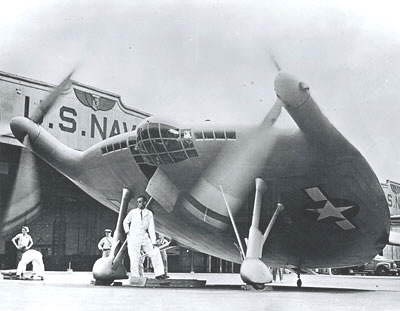
Vought V-173 "Flying Flapjack at NAS New York, June
1947
(Official US Navy Photo)

The Blue Angels at NAS New York, June 16, 1947
(From left
to right: Lt. Robert H. Thilen, Lt. Charles A. Knight, Lt. Comdr. Robert A.
Clarke, Lt. Comdr. R.E. (Dusty) Rhodes, and Lt. (jg) W.C,.May.
(Official US
Navy Photo)

Lockheed P-2 Neptune and a Beech T-34 at Floyd Bennett Field
during an airshow. (Note the 7R tail number signifying NAS New York)
(Unknown
Photographer)
After World War 2, historic Floyd Bennett Field remained active as NAS New York.
The field was the home of many naval aviation units, including fighter, attack,
transport, and anti-submarine patrol squadrons. Just as in the "Golden Age" of
this airport, record breaking flights still continued. Here is a chronology of
some events that occured during the Cold War:
11/24/45 - 5/23/46 -- Squadron VPB-111 is based at NAS New York.
5/11/46 -- PLANE CRASH KILLS PILOT; Machine Cracks Up on Baseball Field in Brooklyn Park.(NY Times)
5/18/46 -- 2 DIE IN PLANE CRASH IN AMUSEMENT PARK. Shortly after a few visitors had left Playland Park at Beach Ninety-eighth Street and the ocean front in Rockaway Beach, Queens, a Navy trainer plane crashed in flames last night in the park, killing ... (NY Times)
7/1/46 -- Experimental Squadron, VX-3, was established at NAS New York to study
and evaluate the adaptability of helicopters to naval purposes.
7/1/46 -- NAVAL PILOT KILLED IN FORCED LANDING. MITCHEL FIELD, L.I., July 27 -- A Naval Reserve pilot was killed this afternoon in a runway crash as he was attempting an emergency landing with a Grumman Hellcat on a routine flight from Floyd Bennett Field in Brooklyn.(NY Times)
1/17/47 -- AVIATION UNIT TO MOVE; Police Will Shift From Staten Island to Floyd Bennett. The two Police planes-a Stinson Reliant and a Grumman twin engine amphibian, will be based at Hangar No. 8 at Floyd Bennett Field. The Stinson will probably be flown to its new base tomorrow, but The Grumman, which has just been reconditioned, will be taken to ... (NY Times)
5/10/47 -- HELICOPTER CRASH PUTS END TO SHOW; Coast Guard Officer Escapes as Craft Burns While 250 School Students Watch. A Coast Guard helicopter crashed and burned yesterday afternoon at Floyd Bennett Field during a three-hour air show staged for 250 high school newspaper reporters and photographers from New York and New Jersey. No one was injured. (NY Times)
5/26/47 -- Setback. Helicopters, often touted as the best hope of timid commuters, had a bad fortnight. Three of the windmill aircraft cracked up like any common airplane. A Bell helicopter broke up in the air and fell into Lake Union in Seattle, killing the pilot and a Civil Aeronautics Administration man. Two days later, Coast Guard Pilot David Gershowitz was showing off his Sikorsky HO51 before 250 high-school kids at Floyd Bennett Field, New York, when he swooped too low, pulled up too quickly. The tail rotor hit the ground and broke off. The helicopter belly-crashed in orange flames as Pilot Gershowitz rolled to safety... (Time Magazine)
6/1/47 -- TWO DIE AS PLANES COLLIDE IN THE AIR; Occupants of Piper Cub Fall to Deaths, Navy Transport Is Only Slightly Damaged. A flight instructor and his student were killed yesterday afternoon when their Piper Cub plane plummeted from a 2,000-foot altitude into woodland near Red Bank, N.J., after a collision with a Navy transport plane bound from Floyd Bennett Field, Brooklyn, to Patuxent River, Md. (NY Times)
6/30/47 -- 10,000 SEE CRASH AT NAVY AIR SHOW; Pilot Escapes Serious Injuries in Upset in His Take-off at Reserves' Exhibition. Ten thousand persons watched as a Navy plane crashed on a Floyd Bennett Field runway yesterday afternoon in a four-hour showing of the strength of the Navy and Marine Air Reserve...(NY Times)
9/20/47 -- A Douglas DC-4 operated by Pan American World Airways (N88911) with 5
crewmembers and 36 passengers on board, made an emergency landing at Floyd
Bennett Field. Three hours into the flight from New York to Bermuda, problems
with the right hand fuel system caused the Captain to attempt to operate the
No.3 and 4 engines from their respective main tanks. Both engines failed a
little later. The flight was continued on 2 engines until the fire warning light
came on for both No.3 and 4 engines. Shortly after firing the No.3 engine CO2
bottle, the landing gear leg dropped down with its tire burning. Full takeoff
power was applied as the crew prepared for a ditching. The aircraft was able to
reach Floyd Bennett and landed 775ft from the south end of Runway 01, skidding
for another 2167ft on the runway. It appeared that the engine problems were
caused by electrical arcing between an aluminium battery bus bar and an engine
control pulley bracket in the No.3 engine nacelle.
10/12/47 -- TWO MEN MISSING AS PLANES COLLIDE; Crew of One Craft Rescued From the Sound After Navy Reserve Units Crash in Air. Two naval air reserve training planes from Floyd Bennett Field, flying in a tight formation of six machines, collided north of Wading River, L.I., yesterday, then crashed and sank in Long Island Sound. (NY Times)
11/25/47 -- NAVY AIR CRASH KILLS TWO IN LOT IN QUEENS. Two Navy men were killed yesterday when a two-engined Navy plane crashed in a lot at Francis Lewis Boulevard and 130th Avenue, Laurelton, Queens. The plane was on a routine flight from Norfolk, Va., to Floyd Bennett Field. (NY Times)
11/25/47 -- NAVY PLANE CRASH KILLS 2 NEAR N.Y. New York Nov 24 (U.P.) Lt Cmdr Charles V. Schug, 36, the pilot, of Ridgewood NY, and Frederick Walters, 42, photographers mate 1st class, of Brooklyn, were killed today at the crash in Laurelton, NY, of a twin engine plane returning from Norfolk to Floyd Bennet (sic) Field. (The Washington Post)
7/11/48 -- NAVY FLIERS CRASH IN MATTITUCK INLET; Boatmen Find Wrecked Plane Off Bailey's Beach -- Two Reserve Officers Lost. MATTITUCK, L.I., July 10 -- A plane that crashed in Mattituck Inlet this afternoon was identified tonight as a Navy aircraft and a volunteer Navy reserve officer and a member of the enlisted reserve were listed as missing. Their names were Ensign Warren C. Bosch, 24 years old, of 1929 Menahan Street, Brooklyn, the pilot, and Aviation Machinist's Mate, 3d Class, Bernard J. Glass, 23, of 60-31 Fifty-ninth Avenue, Maspeth, Queens. (NY Times)
9/5/48 -- PLANE RIPS THROUGH HOUSE IN QUEENS; FOUR ARE KILLED. Sudden death on the wings of a Navy Corsair fighter struck four
persons yesterday afternoon when the plane crashed into a four-family home
one block from the Bayside station of the Long Island Rail Road. The victims
included the pilot, a Marine Corps reserve officer on his first day of a
two-week reserve training course, two women occupants of the house at 39-29
212th Street and a woman visitor.
The police identified two of the women by finger rings. They were MRS.
HELEN RAYNOR, occupant of the ground floor, and MRS. ALICE CRESSMER, who
lived on the top floor. At 10 o'clock last night the body of the third woman
was taken from the ruins. She was identified as MISS LOUISE PAUL, 26
year-old niece of MRS. CRESSMER, who had been visiting her aunt. She
apparently had been pinned in the wreckage by a piece of the plane.
The pilot was First Lieut. ROGER OLSEN. He was 25 years old and lived
with his sister MRS. BURTON A. AMES at Hillandale Farms, Weaver Street, New
Rochelle, N.Y. On his left hand he wore a gold Navy ring with the
inscription: "Pensacola, 1943".
Eyewitnesses, including members of the Bayside police and fire units,
noticed the plane apparently in trouble about 2:35 yesterday afternoon.
Several agreed that the plane rolled over before it tore into the upper
story of the two-story house.
Fireman CLINTON ROSSON of 32-15 206th Street, a licensed airplane
pilot, said the plane was stunting at 1,100 feet. He told a four-man Naval
Board of Inquiry that he saw the pilot execute one barrel roll at that
height and another as he dropped lower. He said he saw a fragment of the
propeller on the single-engined plane fly off just before the crash. The
police recovered a propeller section about two and one-half feet long from a
backyard about 200 feet away from the crash scene.
The plane thundered into the brick-and-frame dwelling at 2:40, missing
the main Bayside shopping section by less than 1,000 feet. Gas-oline from
its wing tanks burst into flame immediately, balking rescuers who were on
the scene almost at the instant of the crash.
With the crash heard blocks away, the plane tore through the roof, top
floor and ground floor of the building and buried its nose in the cellar.
Wedged in the cockpit, LIEUT. OLSEN had no chance for his life. Witnesses
saw MRS. CRESSMER on the top floor, her clothing aflame, for a few seconds
before the floor collapsed under her. MRS. RAYNOR, trapped by flames on the
ground floor, screamed in vain for help before the floor in her apartment
also collapsed.
ALBERT CRESSMER, husband of MRS. CRESSMER and uncle of the missing
niece, told the police that the two women were in the house when he left on
a shopping tour shortly before the crash. Since MISS PAUL'S body had not
been recovered by last evening, the police believed the plane had carried
her into the cellar. DENNIS RAYNOR, 2-year-old son of the ground-floor
family, was playing in the back yard and escaped injury.
3 OTHERS ESCAPE INJURY
Next door three persons escaped injury, MRS. AUGUSTA SHUMWAY, a
73-year-old widow, was in the bathroom when the crash shook her ground-floor
apartment. She emerged unhurt but shaken and hysterical.
On the ground floor MRS. CECILIA ADELSTEIN and her son RICHARD, 20,
were terrified by the crash. MRS. ADELSTEIN was struck on the head by a
picture knocked off the wall but was otherwise uninjured. She and the son
rushed into the street. Others living in the building were away from home at
the time.
Two daughters of the CRESSMERS, CONNIE, 10, and EDITH, 7, had gone to
a neighborhood movie. ALBERT CRESSMER, the father, did not tell them his
wife and niece were dead when they joined him at the scene. MISS PAUL, the
niece, lived at 10 Avon Road, Narberth, Pa., and was visiting her relatives
over the Labor Day week-end. CLIFFORD RAYNOR, husband of MRS. RAYNOR, was
off on a fishing trip and could not be located hours after .
Patrolman ROBERT HUDSON, leaving to catch the 2:50 train for duty in
Manhattan, was a block away from the station when he saw the plane flying
low.
"It was ovbiously in distress," he recounted. "It did a roll just
before it hit the house. Before striking it sheared off the tops of some
trees near by. As I ran toward the house I saw a woman kneeling near the
shattered living-room window. She was screaming. Then the fire broke out. I
ran into a house near by and phoned the police. When I went back with some
neighbors the fire was so intense that we could not reach her."
EXPECTED PILOT TO PULL OUT
EDWARD ARNOLD, from his backyard three blocks away, said the airplane
was bound from west to east. He judged that it was in a deep power dive and
said he expected the pilot to pull out.
"I didn't hear the engine pick up," he said. "There was a dull heavy
thud as the plane struck and then it exploded."
Firemen from Engine Company 306 and Hook and Ladder Company 152, three
blocks away, watched the plane as it seemed to spiral in the sky. Deciding
that it was about to crash, they rolled out their apparatus and were at the
scene within minutes of the impact. A police emergency squad arrived at the
same time, but the flames and heat were so intense that they could not enter
the building. Because of the danger to frame houses nearby Battalion Chief
JAMES ROCHE sent in a second alarm. By 3:06 P.M., with the use of chemical
foam the fire was considered under control after raging for nearly half an
hour.
Fire Commissioner FRANK J. QUAYLE supervised fire operations, while
the police at the scene were directed by Chief Inspector Martin J. Brown.
Chief Fire Marshal THOMAS P. BROPHY conducted an investigation for the
city.
Lieutenant OLSEN, the pilot, served as a first lieutenant with the
Marine Corps during the war on night-fighter planes in the Pacific. He was
single and a salesman for a hospital supply concern here. His parents are
MR. AND MRS. OLAF OLSEN of Chicago, where his father is a custom tailor. He
leaves two sisters, MISS HELEN OLSEN of Chicago and MRS. AMES. MR. AMES is
an assistant vice-president of Lord & Taylor.
The single-engined Corsair was used extensively by the Navy as a
single-place fighter in the last war. Its wing tanks hold 225 gallons of
gasoline and its eighteen-cylinder, 2100 horsepower engine give it a speed
of 425 miles an hour and a service ceiling of 40,000 feet. With a normal
load it weighs more than six tons.
BOARD IS STUDYING QUEENS AIR CRASH; Navy Authorities Conducting Inquiry Into Accident in Which 4 Were Killed. Navy authorities at Floyd Bennett Field, Brooklyn, said yesterday that a three-man board of inquiry was studying the wreckage of the Navy Corsair that crashed into a Bayside home Saturday afternoon, killing the pilot and three women occupants of the house. (9/5-6/48 NY Times)
5/6/49 -- TO MARK 30TH DATE OF ATLANTIC FLIGHT; Many Who Had Part in Navy Crossing in 1919 Will Attend Fete Here Sunday. The thirtieth anniversary of the first flight across the Atlantic will be marked with ceremonies here Sunday. The Navy's Truculent Turtle, the P2V2, Lockheed Neptune, the world's long distance champion, will take off from Floyd Bennett Field, near the point from which, on May 8, 1919, three lumbering Navy-Curtiss flying boats started their record venture to Plymouth, England, via the Azores and Lisbon. (NY Times)
10/31/49 -- "Operation Metropolis". One cloudy afternoon last week, twelve B-26 light bombers roared down the runway at Floyd Bennett Field, took off and disappeared to rendezvous for a bombing run on New York City. Minutes later, three radar stations in outlying areas, two manned by Canadians, one by Americans, had picked up the bombers and flashed instructions by radio to eight waiting Canadian Vampire jets and eight U.S. F47 Thunderbolts. "Operation Metropolis," a simulated air attack and defense of New York, was underway.
In the first peacetime U.S.-Canadian joint air maneuver, 240 R.C.A.F. reserves worked from a defense control center with the U.S. Air National Guard. Every bomber was intercepted by the defending fighters before it got within range of its target. Limited and simple as the problem was, it demonstrated, said the R.C.A.F., "the ability of the Canadian Air Reservists and United States Air National Guardsmen to integrate forces in the event of an emergency."
The maneuver was one more small piece in the growing pattern of joint defense. Both Washington and Ottawa want a pool of officers and men who know how both services work. Recently Canada's Naval Air Group 18 finished an intensive three-month course at Quonset Point, R.I. With U.S. pilots, they concentrated on detecting and bombing schnorkel submarines. This month, the Canadian destroyer Halda spent two weeks training in Chesapeake Bay, then sailed with a U.S. Navy amphibious force for a practice assault on the coast of Labrador.
Three weeks ago such team work got a priority policy rating from the North Atlantic Treaty Defense Committee. If North American forces were to work as an operational unit, both Washington and Ottawa wanted many more get-togethers like Operation Metropolis. (Time Magazine)
2/8/50 -- A Grumman F9F-2 Panther (BuNo 123449 of Squadron VR-31) stalled in turn during emergency landing at Floyd Bennett NAS, NY and crashed into Jamaica Bay. The pilot was killed in the crash.
2/9/50 -- Pilot and a Navy Jet Fighter Lost In Plane's Plunge Into Jamaica Bay. A Navy pilot went down with his jet fighter plane yesterday when, apparently because of engine trouble, it plunged into Jamaica Bay. The pilot, who was alone, was identified as Jack J. Conrad, Chief Aviation Pilot. His name was disclosed after naval officials had notified his wife, Ruth, of 459A ...(NY Times)
2/26/50 -- PLANE IN FORCED LANDING; Navy Lieutenant Slightly Hurt in Accident in Brooklyn. (NY Times)
7/4/50 -- BIG NAVY SEAPLANE IN WITH 'MIDDIES'; HUGE NAVY FLYING BOAT ARRIVES HERE FOR VISIT. The Navy's Philippine Mars alighted gently on Rockaway Inlet yesterday afternoon with ninetytwo midshipmen from the Naval Academy on a routine training cruise. They had left Jacksonville, Fla., five and a half hours before. (NY Times)
4/14/51 -- NAVY PLANE DIVES INTO EAST RIVER; POLICE GRAPPLING FOR PLANE WRECKAGE IN EAST RIVER. A Navy fighter plane narrowly missed striking buildings on the lower East Side and plunged into the East River, killing its pilot, at 10:20 o'clock yesterday morning. (NY Times)
5/18/51 -- NAVY PLANE CRASHES OFF FLATBUSH AVENUE. A Navy fighter plane was demolished at 9 A.M. yesterday when it smashed through a barbed wire fence surrounding Floyd Bennett Field skidded across heavily traveled Flatbush Avenue without ...(NY Times)
6/12/52 -- Pilot Is Killed in Crash in Westchester After Swerving Plane to Avoid Golfers. LARCHMONT, N. Y., June 11 -- A Marine Reservist tried to land a disabled fighter plane on the golf course of the Bonnie Briar Country Club late this morning, but so many players were on the fairways and greens that he swerved into trees to avoid them and was killed. (NY Times)
8/4/52 -- AIRMAN IS RESCUED IN ROCKAWAY INLET; Veteran of 100 Korea Missions Is Saved by Fishermen After Crash-Landing. Marine Maj. John C. Riley, first naval airman to fly 100 missions over Korea, was recued yesterday from Rockaway Inlet after engine failure had forced him to crash-land his plane off Breezy Point, Queens. The accident happened at 2:15 P. M., two minutes after Major Riley had taken up a Grumman F-6-F from Floyd Bennett Air Base for an engineering test light. (NY Times)
10/24/52 -- Navy Firemen Display Techniques In Rescuing Pilots From Crashes. A dramatic demonstration of fire-fighting techniques and equipment that have made possible the saving of hundreds of lives in airplane crashes was put on yesterday at Floyd Bennett Field in Brooklyn. Members of the fire department at the Naval Air Station, New York, finishing a two-week refresher course in fire fighting, manned crash trucks and repeatedly rescued a dummy "pilot" from the cockpit of a plane engulfed in gasoline flames. (NY Times)
7/12/53 -- 2 NAVY FLIERS DIE NEAR OIL CITY, PA.; Information Officer at Floyd Bennett Field Is Victim -- 10 in B-29 Found Dead. OIL CITY, Pa., July 11 (UP) -- Two naval officers were killed early today when their twin-engine Beechcraft training plane crashed in a wooded area eight miles east of here. The men were identified as Comdr. William R. Eddins, 32 years old, of New Orleans and 9225 Fort Hamilton Parkway, Brooklyn public information officer at Floyd Bennett Field, and Lieut. Frank L. Nelson of 7 Perth Avenue, Merrick, L. I. (NY Times)
12/5/53 -- 2 Navy Fliers, Downed in the Sound, Survive 12 Hours in Special Suits. Two Navy fliers were rescued at 8:02 A.M. yesterday after bobbing twelve hours in a rubber life raft on Long Island Sound in fog and near-freezing temperatures. Navy spokesmen credited a new type exposure suit with saving their lives. (NY Times)
4/1/54 -- The first transcontinental flights in less than 4 hours were made by three pilots of Squadron VF-21 in F9F Cougars in a 2,438-mile flight from San Diego to Floyd Bennett Field, N.Y., with aerial refueling over Hutchinson, Kansas. Lieutenant Commander F. X. Brady made the crossing in 3 hours 45 minutes 30 seconds, Lieutenant (jg) J. C. Barrow took 1 minute and 19 seconds longer, and Lieutenant W. Rich made it in 3 hours 48 minutes even. Official timers were not present.
4/23/54 -- A Goodyear FG-1D Corsair (Buno 92487 of VF-842) crashed into oil storage depot near Idlewild APT, NY. Pilot survived with injuries. NAVY PLANE HITS OIL STORAGE TANK; Reserve Pilot Escapes With Cuts and Bruises in Crash Landing at Cedarhurst. A Navy Reserve flier trying to land a plane with a dead engine hit an oil storage tank and crashed here today, but he escaped with only cuts and bruises. (NY Times)
3/24/55 -- VETERAN FLIER KILLED; Pilot Dies in Bennett Field Crash, 2d Mishap in Year. (NY Times)
9/5/55 -- Home for Dinner. As an air-cargo pilot, John Hackett, a burly man with a magnificent R.A.F. mustache, regularly hops across the English Channel a dozen or more times a day. He longed for a longer ride. One sunup last week, Hackett took off from London Airport, got a course from his navigator, Peter Moneypenny, and aimed his twin-jet Canberra bomber westward. Seven hours and 30 minutes later he put down at Brooklyn's Floyd Bennett Field. While newsreel cameras whirled, Hackett and Moneypenny spent 35 minutes on the ground, getting themselves and their plane refueled. Aided by tail winds, the Canberra arrived back in London in a record 6 hr. 17 min. The total elapsed time (14 hr. 21 min.) was no great shakes in these jet days, but Messrs. Hackett and Moneypenny could lay claim to be the first men ever to breakfast in London, lunch in New York and get back to London for dinner. (Time Magazine)
10/2/55 -- PILOT OF RESERVE DIES IN JET IN BAY; Fighter Plunges Into Shallow Water Off Bennett Field -Propeller Kills Mechanic. A Naval Reserve pilot was killed yesterday afternoon when his jet fighter plane crashed into Jamaica Bay. He was on a training flight from Floyd Bennett Naval Air Station in Brooklyn. (NY Times)
1/8/56 -- 2 FLIERS' RITES TODAY; Air Guardsmen Were Lost Jan. 8 in Bomber Crash at Sea. Memorial services for two New York Air National Guardsmen who were killed in a training flight accident Jan. 8 will be held today at Floyd Bennett Field, Brooklyn. (February 19, 1956, Sunday NY Times)
6/22/56 -- "Operation
Sixteen Ton", which ran until September 15, 1956, demonstrated the first
sustained operational mission by the US Air Force Reserve. Reserve aircrews flew
164 sorties and airlifted 856,715 pounds of cargo, flying from NAS New York to
Miami International Airport, Florida, then on to either Puerto Rico or the
Bahamas. In 1956, the U.S. Coast Guard undertook the responsibility of
establishing a series of long range navigation stations in the Caribbean to aid
aircraft and surface vessel movements. The Coast Guard requested Air Force
airlift support. Ultimately, 12 of the 13 Reserve C-46 and C-119 airlift wings
were involved. The sole exception was 403rd Troop Carrier Wing, Portland Ore.,
because of the unit's distance from the operation's staging location, New York
Naval Air Station, Floyd Bennett Field, Brooklyn. On a daily basis, one to four
aircraft departed New York NAS for Miami International Airport, Fla. where the
2585th Air Reserve Flying Center operated the traffic control center. From
Miami, the planes went to either San Juan, Puerto Rico, or San Salvador Air
Force Base, Bahamas. Weather posed the biggest problem as eight flights were
canceled due to Hurricane Betsy. Only one mission was canceled for operational
reasons. Today, one C-5 transport could complete the task in four trips.
(Source: AFNS)
1/13/57 -- Navy Jet's Fuel Tanks Drop on Brooklyn, Blasting a Street and Jarring Residents. Two wing-tip fuel tanks fell yesterday from a Navy jet plane over Brooklyn, causing some residents to fear they were being bombed. (NY Times)
1/14/57 -- NAVY JET STILL MISSING; L.I. Hunt Goes On for Craft That Vanished Saturday. (NY Times)
1/27/57 -- AIR GUARD PILOTS WILL DEFEND CITY; 'Home-Town' Fliers in Bomb Wing at Floyd Bennett to Get Jet Interceptors Jet Trainers Have Arrived. New York's air defense is being assigned to "home-town" pilots who will fly jet fighters from runways within the city limits. (NY Times)
5/6/57 -- SINGLE JET IN TEST LED TO CITY ALARM; Plane Flying at 3,000 Feet Was Engaged in Secret Run for L.I. Concern. The noise of jet plane operations that aroused Manhattan residents Tuesday night was disclosed yesterday to have involved primarily a single fighter on a secret test mission. It took off from The Naval Air Station at Floyd Bennett Field, Brooklyn, at 9:45 P. M, and flew three round-trips between the Battery and the George... (NY Times)
5/21/57 -- An A3D-1 Skywarrior, piloted by Commander Dale
W. Cox, Jr., broke two transcontinental speed records; one for the round trip
Los Angeles to New York and return, in 9 hours 31 minutes 35.4 seconds; and the
other for the east to west flight in 5 hours 12 minutes 39.24
seconds.
6/14/57 -- MARINE FLIER KILLED; Jersey City Reservist Crashes Near Floyd Bennett Field. A Reserve pilot, First Lieut. Leonard J. Kray, 24 years old, of Jersey City,...(NY Times)
6/16/57 -- NAVY PLANE IS SUNK; Strawberry Farmer Rescues Two Officers in L.I. Sound. Special to The New York Times. ORIENT; L. L, June 15-A Two-engine NAVY Beechcraft ... CR Clarke, had left Floyd Bennett Field, Brooklyn, on a routine flight and encountered fog. Peter Sledjuske, The farmer and lobsterman, was picking strawberries with his brother Karol, 41, when he the crash. Sledjuske shouted to his brother (NY Times)
7/16/57 -- An F8U-1P Crusader (bureau number 144608), piloted by
Major J. H. Glenn, Jr., USMC, broke the transcontinental speed record with a
crossing from Los Alamitos, Calif., to Floyd Bennett Field, N.Y. in 3 hours 22
minutes 50.05 seconds for an average speed of 723.517 m.p.h. This was the first
upper atmosphere supersonic flight from the west coast to the east
coast.
7/20/57 -- BLAST JOLTS CITY; LAID TO JET PLANE; Hundreds Say Noise Shook Buildings, but Offending Craft Is Not Detected. The New York area was rattled yesterday by what apparently was the noise from a plane breaking the sound barrier. The noise struck the city shortly before 10:30 A.M. (NY Times)
7/29/57 -- New Jet Record. Hoping to fly faster than the speed of the earth's rotation (1,080 m.p.h.), U.S. Marine Corps Major John H. Glenn Jr., 36, fell short of his hope, nevertheless last week jockeyed a pencil-nosed, silver-painted Navy F8U1 Crusader jet from Long Beach, Calif, to New York City for a new coast-to-coast record of 3 hr. 23 min. First to span the nation at supersonic speed, Pilot Glenn averaged 726 m.p.h. (or Mach 1.1 at his average flying altitude of 35,000 ft.), cut 21 minutes off the previous record established in March 1955 by Air Force Lieut. Colonel Robert R. Scott in a Republic F-84F jet. A pathfinder jet kept Glenn alerted to weather ahead. Three times—near Albuquerque, Olathe, Kans. and Indianapolis—he descended to 25,000 ft. to take aboard about 1,300 gallons of fuel from Navy tanker planes. He finally landed at the Navy's Floyd Bennett Field in Brooklyn with about 40 gallons—"enough," he reported, "to circle the field once." Promptly rewarded with his fourth Distinguished Flying Cross (he earned two D.F.C.s in World War II, another in Korea), Record-Breaker Glenn grinned: "Everything went smooth as silk." (Time Magazine)
8/23/57 -- 4 in Coast Guard Die In Plane Crash Here; AIR CRASH KILLS 4 AT FLOYD BENNETT Jersey Victims Found. A twin-engined amphibious plane crashed and burned shortly after its take-off yesterday afternoon from Floyd Bennett Field, Brooklyn. Four of a crew of six Coast Guardsmen were killed, one walked away from the crash and the other was critically injured. (NY Times)
Killed in the crash of Grumman UF-2G [HU-16E] Albatross, #1259: LCDR Claude S. Labaw (CG Aviator #590), LT Rolland A. Faucher (CG Aviator #711), AD3 Matthew R. Ross, AT3 Gerald R. Fox. The crew was performing a test flight after the aircraft had undergone an intermediate inspection in which the control columns were removed and inspected for fatigue cracks in the bottom casting. "The plane was cleared for take-off and instructed to turn right immediately after take-off to avoid other traffic. Take-off was normal but immediately after leaving the runway the plane banked slightly to the left, hesitated, and then banked and then banked very rapidly to the left until it was in a 90° bank. The left wing tip struck the ground, [and] the plane broke in two and crashed. . .The Accident Board was not able to determine the cause of this accident but certain items all pointed strongly toward reversed aileron control cable rigging as the most probably cause." [Source: U.S. Coast Guard Flight Safety Bulletin, No. 1, February, 1958, pp. 3-11.] Read more here: http://www.check-six.com/Coast_Guard/22_Aug_1957_test_flight.htm
11/22/57 -- The first Reserve Squadron to fire guided missiles as a
part of its regular training, VP-834 from NAS Floyd Bennett Field, completed 2
weeks training at NAS Chincoteague, in which it fired Petrel air-to-surface
missiles under the supervision of Guided Missile Unit 11.
1/12/58 -- PILOT PARACHUTES, GUARD PLANE FALLS. A New York Air National Guard fighter pilot parachuted to safety yesterday from a damaged F-94B jet over Rockaway Beach. The plane crashed in the ocean southwest of Fort Tilden. (NY Times)
11/27/58 -- 2 KILLED AS PLANE FILLS IN BAY HERE; One Missing and Another Hurt in Landing Attempt by Guard Crew in Fog. Two men were killed, another was injured and a fourth was missing in the crash of an Air National Guard plane in Jamaica Bay yesterday(NY Times). Killed in the crash were Captain Ramon Duke, 28, of Brooklyn, and 2nd Lt David b. Hall, 29, of the Bronx. The missing man was identified as Sgt. Ferdinand Roessner, 29, of Queens. Rescued By a police helicopter was Lt. Richard H. Westerberg, 22, of Brooklyn.
2/7/59 -- TWO DIE AS PLANE FALLS IN CANARSIE; Two Others Injured as Navy Craft Crashes in a Dump After 2 Engines Quit. A twin-engined Navy plane crashed yesterday at a city dump two miles from Floyd Bennett Field, Brooklyn, fatally injuring two Reserve officers. Two enlisted men aboard the plane were reported in fair condition. (NY Times) Photos of this S2F crash are expected soon.
 10/15/59 - "Pilot Averts Crash on LI, Dies at Sea"
10/15/59 - "Pilot Averts Crash on LI, Dies at Sea"
Newsday - Dick Zander
Photo caption "First Lt. James Dawson, He Stayed With It"
Shinnecock Hills - A Marine Corps Reserve pilot died over the week end after he made a heroic gesture to prevent possible death to Long Island residents. Refusing to abandon a disabled jet until he guided the crippled craft over the Atlantic, he parachuted to his death in the choppy waters.
First Lt. James W. Dawson, 25, of Wantagh was on a routine training flight Saturday in a single engine FJ Fury jet when the plane developed engine trouble over this eastern Suffolk community near Southhampton. He radioed a fellow reservist, Lt. Robert Lang, who was flying near him in a similar plane about the power failure.
"The engine has gone bad, Dawson said. "I don't think I'll be able to hold out long." Lang told him to bail out. "I'm going to stay with it until I'm out over water - there are people down there. I don't want to hit anybody," Dawson said.
Dawson's crippled jet was flying about 450 MPH at an altitude of 25,000 feet. He was headed out toward the ocean. He kept the jet on its path until he was about five miles out and then triggered the ejector mechanism. His parachute opened as the jet streaked toward a crash in rough waters.
Lang radioed for help to the Suffolk Air Force Base at Westhampton Beach. A helicopter manned by Lt. Harold Pickering, T/Sgt. Merwin Westerberg and S/Sgt. Thomas L. Dannenberg was sent to the rescue. They spotted his chute about two and a half miles southeast of Shinnecock Inlet. A Coast Guard boat from Shinnecock Lifeboat Station at Hampton Bays was dispatched to the scene while the helicopter marked the area.
Dawson had been unable to rid himself of the parachute in the rough waters and his life preserver was only partially inflated. Pickering lowered Westerberg and Dannenberg in a basket to the water. They jumped in and freed the flyer from the chute. The unconscious pilot was placed upon the Coast Guard boat and died on the way to the shore.
A spokesman at Floyd Bennett Field in Brooklyn said that Dawson, who was attached with Lang to the Marine Corps Reserve Fighter Squadron 131 there, had left the base at 9:16 AM Saturday. The crash occured about 10:20 AM.
Dawson, unmarried, lived with his parents, Mr. and Mrs. Henry Dawson of 1870 Jones Ave., Wantagh. He was released from the Marine Corps last December and became a reservist in January. He was an inspector for the Reeves Instrument Co., Roosevelt Field. A graduate of St. John's Preparatory School, he enlisted in the Marine Corps in September, 1952. He had been studying investments and accounting during night sessions at Long Island University.
Special thanks to Mr. Dick Dawson (also was stationed at NAS New York - USMC in 1968) for forwarding this newspaper article.
7/26/60 -- QUEENS JET PILOT IS KILLED IN CRASH. A Marine Corps Reserve pilot was killed yesterday when his jet fighter crashed and burned as he was taking off from Floyd Bennett Field in Brooklyn. (NY Times)
1/21/61 -- 3 Feared Drowned as Truck Plunges Off Floyd Bennett Pier. Two Navy men and a civilian were feared drowned at the height of the snowstorm early yesterday morning when the truck in which they were riding went off a pier at Floyd Bennett Field in Brooklyn. One body was recovered later in the day and the two other men were being sought. (NY Times)
6/2/61 -- Noisy Record. It was a far cry from the propeller-driven days of Jimmy Doolittle, Jackie Cochran, reciprocating engines, wheel pants and struts. Civilians no longer could afford to compete, and according to present procedure, only one service was invited. But early one day last week, five Navy F4H-1 Phantom II jets roared down the runway at Los Angeles International Airport and raced eastward. Their goals: Brooklyn's Floyd Bennett Field, a new transcontinental speed record, and the Bendix Trophy—one of the most coveted awards in U.S. aviation. Aboard each of the two-man, tvvin-engined jets was a Navy pilot and a radar-intercept officer, whose job was to navigate and handle communications. Each mile of the transcontinental trip was meticulously plotted, and electronic computers calculated the precise place and time at which mid-air refueling would be required (near Albuquerque, St. Louis and Pittsburgh). Using afterburners for maximum speed—more than 1,300 m.p.h.—the jets kept to an altitude of 50,000 ft. except for refueling, when they throttled back to less than 600 m.p.h. and dropped to 30,000 ft. to rendezvous with waiting tankers. By the time the racers had braked to a stop in Brooklyn, drag parachutes billowing behind, three had cracked the old transcontinental record of 3 hr. 5 min. 39.2 sec. set in 1957 by Air Force Lieut. Gustav Klatt in an RF-101 Voodoo jet. The winning time, posted by Lieut. Richard Gordon Jr. and Lieut, (j.g.) Bobbie Young: 2 hr. 47 min. In New Jersey and New York, angry householders complained that the sonic booms from the swift-flying planes had also cracked assorted crockery and windows. (Time Magazine)
5/2/62 -- ALL 95 ON JETLINER KILLED IN CRASH INTO BAY ON TAKE-OFF AT IDLEWILD; PRESIDENT SPURS FEDERAL INQUIRY; WRECKAGE BURNS W. Alton Jones and Admiral Conolly Are Among Victims All 95 Aboard Are Killed as Jet Airliner Crashes Into Jamaica Bay on Take-Off WRECKAGE BURNS IN MARSHY AREA Witnesses Say Craft Fell Straight Down From a Height of 500 Feet. Ninety-five persons were killed yesterday in a jet airliner crash in Jamaica Bay. It was the highest toll involving a single commercial airplane in the nation's history. (NY Times) This crash was visible from Floyd Bennett Field.
5/24/61 -- The US Navy launched Project LANA, where the initials stood for "50th Anniversary of
Naval Aviation", the L standing for the Roman numeral 50. This was a
transcontinental Bendix Trophy Race speed dash from Los Angeles to New York.
Five F4H-1Fs took off at timed intervals from Ontario, California and set out
for NAS Brooklyn (formerly Floyd Bennett Field). They made four supersonic
dashes, separated by three subsonic mid-air refuellings by tanker-configured
Douglas A3D-2 Skywarriors. Three of the F4H Phantom II fighters finished the
journey, shattering the record set back in November of 1957 by a USAF McDonnell
RF-101C Voodoo. The top speed, set in aircraft 148270 piloted by Lt. R. F.
Gordon and Lt(jg) B. R. Young (RIO), was an average of 869.73 mph, on the
2,421.4 mile flight, and set a new record of 2 hours, 47 minutes.
6/2/61 -- NOISY RECORD - It was a far cry from the propeller-driven days of Jimmy Doolittle, Jackie Cochran, reciprocating engines, wheel pants and struts. Civilians no longer could afford to compete, and according to present procedure, only one service was invited. But early one day last week, five Navy F4H-1 Phantom II jets roared down the runway at Los Angeles International Airport and raced eastward. Their goals: Brooklyn's Floyd Bennett Field, a new transcontinental speed record, and the Bendix Trophy—one of the most coveted awards in U.S. aviation. Aboard each of the two-man, tvvin-engined jets was a Navy pilot and a radar-intercept officer, whose job was to navigate and handle communications. Each mile of the transcontinental trip was meticulously plotted, and electronic computers calculated the precise place and time at which mid-air refueling would be required (near Albuquerque, St. Louis and Pittsburgh). Using afterburners for maximum speed—more than 1,300 m.p.h.—the jets kept to an altitude of 50,000 ft. except for refueling, when they throttled back to less than 600 m.p.h. and dropped to 30,000 ft. to rendezvous with waiting tankers. By the time the racers had braked to a stop in Brooklyn, drag parachutes billowing behind, three had cracked the old transcontinental record of 3 hr. 5 min. 39.2 sec. set in 1957 by Air Force Lieut. Gustav Klatt in an RF-101 Voodoo jet. The winning time, posted by Lieut. Richard Gordon Jr. and Lieut, (j.g.) Bobbie Young: 2 hr. 47 min. In New Jersey and New York, angry householders complained that the sonic booms from the swift-flying planes had also cracked assorted crockery and windows. (Time Magazine)
6/18/62 -- None Hurt in Jet Crash At Floyd Bennett Field (No further information) (NY Times)
9/12/62 -- A Grumman Albatross, UF-2G, piloted byy Lieutenant Commander D. E. Moore,
climbed to 29,460 feet over Floyd Bennett Field, N.Y., and set a new world
altitude record for amphibians carrying a 1,000 kilogram load. On the same day,
Lieutenant Commander F. A. W. Franke, Jr., piloted the Albatross to a new record
for amphibians with a 2,000 kilogram load with a climb to 27,380
feet.
9/15/62 -- Lieutenant Commander R. A. Hoffman, piloting a Grumman
Albatross, UF-2G, set a new world 5,000 kilometer speed record for amphibians
carrying a 1,000 kilogram load with a speed of 151.4 mph. on a course from Floyd
Bennett Field to Plattsburgh, N.Y., to Dupree, South Dakota, and return to Floyd
Bennett Field, N.Y.
9/13/63 -- Navy Jet Crashes In Coney Island; No One Is Injured; Flight to Virginia. A Navy jet plane, struck by lightning, crashed into the Coney Island yards of the BMT during a thunderstorm last night, seconds after the pilot had bailed out.(NY Times)
Postcards purchased by Rodney Martin at the Ship's Store, NAS New York, in 1965.

NAS New York - Front Gate (from the collection of Rodney Martin).

NAS New York - Control Tower. Note HF antennas on roof(from the collection of Rodney Martin).
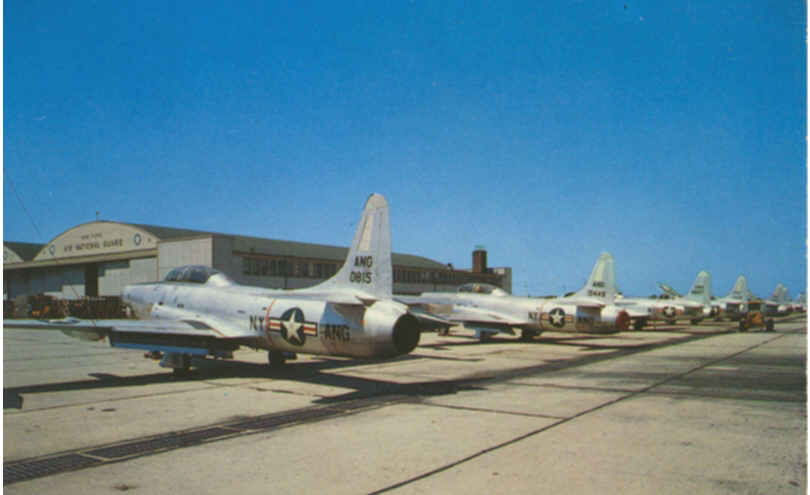
NAS New York - NYANG Jets on ramp (from the collection of Rodney Martin).

NAS New York - Transient aircraft parking on bay side (from the collection of Rodney Martin).
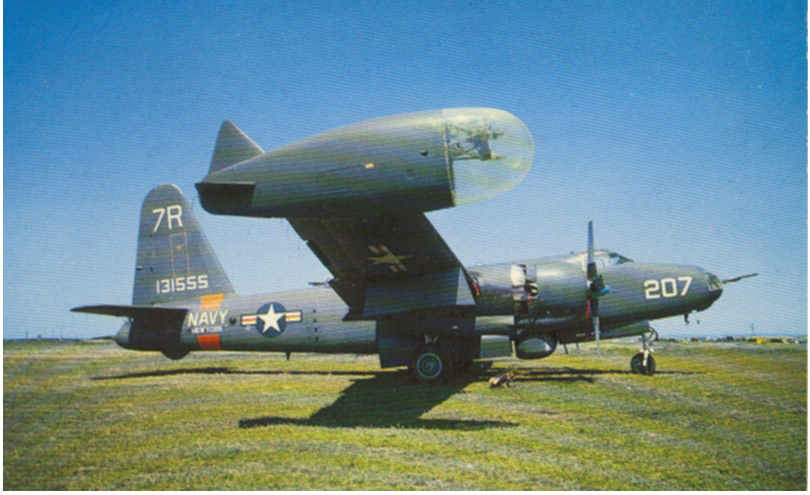
NAS New York - Lockheed P2 Neptune #207 (from the collection of Rodney Martin).
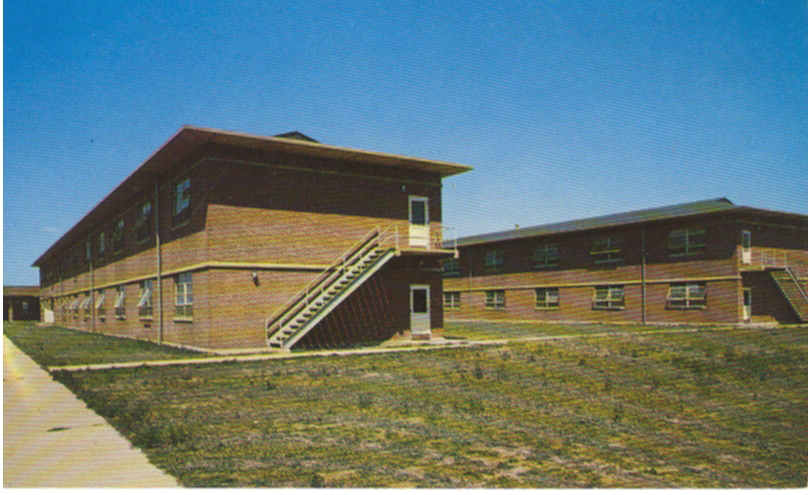
NAS New York - Base housing (was later used for Job Corps housing) (from the collection of Rodney Martin).
Special thanks to Mr. Rodney Martin for sharing these great postcards! Check out Rodney's website at http://www.u-434.com
9/13/63 -- Navy Jet Crashes In Coney Island; No One Is Injured; Flight to Virginia. A Navy jet plane, struck by lightning, crashed into the Coney Island yards of the BMT during a thunderstorm last night, seconds after the pilot had bailed out. (NY Times)
1/27/68 -- Attack Squadron VA-831 was activated after
the USS Pueblo (AGER-2) was captured by North Korea.
7/1/68 -- VA-831
was the first activated reserve unit on the east coast assigned to an
operational air wing. The squadron was assigned to CVW-1 on the USS JOHN F.
KENNEDY CVA-67.
July 1968 -- Lt. Cmdr. John F. Tylunas perished in an
accident.
10/18/68 -- VA-831 was deactivated and returned to reserve
status.
6/2/69 -- Marine Jet Crashes Near Bennett Field; Passing Driver Hurt. A Marine Reserve jet fighter plane lost power during a take-off at Floyd Bennett Field in Brooklyn yesterday morning and crashed into marshes less than 100 feet from Flatbush Avenue...(NY Times)
November 1970 -- Tylunas Hall, the new Navy training facility at
Floyd Bennett Field, was dedicated in honor of Lt. Cmdr. John F. Tylunas.
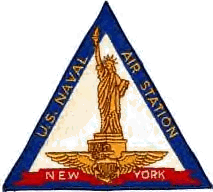
Cold
War Units based at NAS New York, Floyd Bennett Field

VF-831
Operational:Sept
1949 - Feb. 1,1950.
Aircraft: F6F's CO was LCDR A.J. Denham

VF-837
Operational:
7/1/46 - ? (As VFB-718, then VF-68A)
Aircraft: F-6F Hellcats, F-4U
Corsairs

VF-839
Operational:
1950 ?
Aircraft: F9F Bearcats

VF-842
Operational:
1953 - 1955?
Aircraft: F4U Phantoms
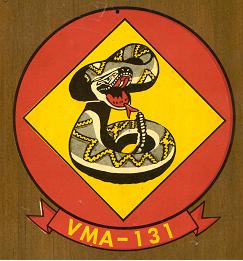
VMA-131/VMF-131
Operational:
1950s - 1960s?
Aircraft: USMC Unit A4 Skyhawks. Thanks to 1st Sgt Joseph P. Cope USMCR Retired and Master Sergeant Philip Lichtenberger USMCR Retired for the insignia!
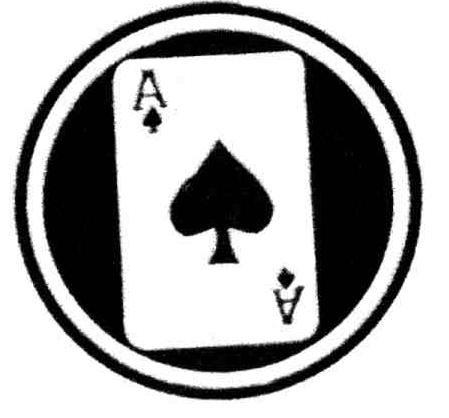
VMF-132
Operational:
1950s?
Aircraft: ?
)
Thanks to 1st Sgt Joseph P. Cope USMCR Retired for the insignia!

VMF-232
Operational:
1950s?
Aircraft: USMC Unit FJ3 Furies? Thanks to 1st Sgt Joseph P. Cope USMCR Retired for the insignia!
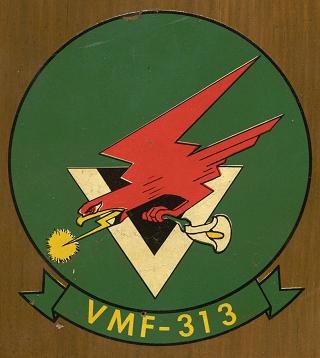
VMF-313
Operational:
1950s?
Aircraft: ? Thanks to Master Sergeant Philip Lichtenberger USMCR Retired for the insignia!

VPB-111
Operational:
11/24/45 - 5/23/46
Aircraft: PB4Y-1s or 2s ??

VP-832
Operational: November 1956 - January
1968
Aircraft: P-2 Neptunes (Image provided by Paul V. Schwarz)

VP-833
Operational:
November 1956 - January 1968
Aircraft: P-2 Neptunes

VP-834
Operational:
November 1956 - January 1968
Aircraft: P-2 Neptunes

VS-835
Operational:
?
Aircraft: S2F?

VP-836
Operational:
1950s - 1960s
Aircraft: PB4Y Privateers and P2 Neptunes?
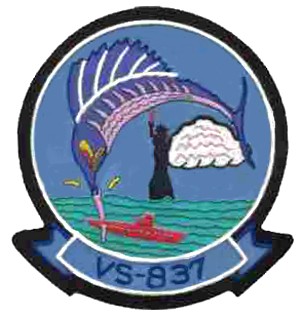
VP-837
(VS-837)
Operational: Jan 1960 - Jan 1968
Aircraft: P2
Neptunes?

VP-913
Operational:
July 1946 - November 1946, November 1956 - January 1968
Aircraft: P-2
Neptunes
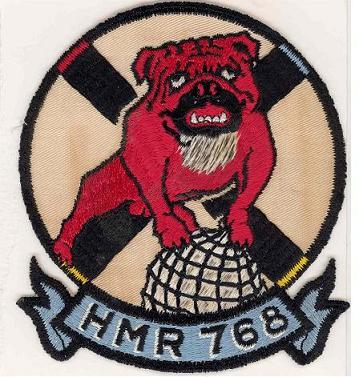

HMR-768/HMM-768
Operational:
Sept 1958 - Oct 1970
Aircraft: UH-34D and CH-46A USMC Helicopter Unit Redesignated HMM-768 in April 1962. Thanks to 1st Sgt Joseph P. Cope USMCR Retired, and Donald L. Lundgren MSGT. USMC Retired, for these insignia!

HS-831
Operational:
1960s?
Aircraft: HELASRON 831

8494th
Navigator Training Squadron (USAF Reserve)
Operational:
1955?
Aircraft: C-46 and C-47
Contact
us:
Can you help us with our research on the history of Floyd
Bennett Field? Do you have any old photos, documents, or stories about your
experiences at the field? Please contact us!
Home
| News
| 1930's
| WW2 |
Cold War
| NYPD
| USCG
| Gateway |
Photos |
Links
Sign
Guestbook | View
Guestbook | - Contact Us -





 10/15/59 - "Pilot Averts Crash on LI, Dies at Sea"
10/15/59 - "Pilot Averts Crash on LI, Dies at Sea"



















